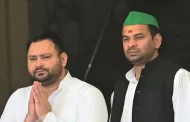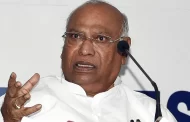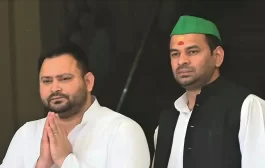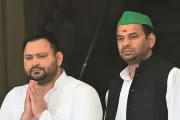“Narendra Modi is the best in creating false impressions. In the process he has given India its lost half decade. Elect him again and by 2024 it will be a lost decade.”

The devastating concluding lines neatly sum up former finance minister Yashwant Sinha’s slim 250-page book “India Unmade” written in collaboration with Aditya Sinha and published by Juggernaut. The book, as its title suggests, is an indictment of Narendra Modi and his finance minister Arun Jaitley and their disastrous mismanagement of the Indian economy.
Sinha hastens at the outset to clarify that he was not always a critic of Narendra Modi. But he had waited for 40 months before he spoke up, he writes. In those 40 months he had come to realise how insecure Narendra Modi is; how neither he nor Jaitley had any institutional memory. Prime Minister Modi preferred power-point presentations rather than poring through files and thus missed out on the various nuances in notings, suggestions, observations and objections recorded over the past years.
Obsessed with being a ‘game changer’, by the fourth anniversary of the Modi Government, Modi had initiated as many as 97 ‘Pradhan Mantri Yojanas’, many of them older projects given a new name, thus making the Modi Government a ‘name changer’.
Sinha says although he has known Narendra Modi for many years, he was not aware of a single occasion when he had taken any interest in economic issues within the party. This despite the fact that Narendra Modi was a member of the national executive of the BJP and all other important party fora. He recalls how Modi made fun of the GST when he was chief minister of Gujarat. This would never work, Modi said, and the IT infrastructure would not be able to serve and sustain the load.
The book is a delight to read and is highly recommended to everyone who is interested in the relationship between economy and politics. Having been a bureaucrat, an IAS officer who opted to make a career in politics, and twice India’s finance minister, Sinha speaks effortlessly on his own experience
UPA sent the then finance minister Pranab Mukherjee and later another union minister Jairam Ramesh to Ahmedabad to convince Modi but he refused to relent. But once he became Prime Minister, Modi went all out to implement GST, insisting on a midnight session of Parliament to celebrate the historic reform. As chief minister he had seen the weaknesses of the GST but as Prime Minister he had addressed them, he claimed. There was however no evidence of that, Sinha notes, as a clearly unprepared Government implemented a flawed GST and foisted it on the country, which was not prepared for it.
Sinha is acerbic while commenting on Arun Jaitley’s stewardship of the finance ministry. “Everyone knows how the finance minister’s influence in Government has declined to almost zero—and he is unable to push things even in his own ministry,” writes Sinha. While he was finance minister, he recalls, he had found even 24 hours insufficient to finish with the day’s work. But Jaitley accumulated not just finance but also the ministry of corporate affairs, disinvestment and for some time Defence, ‘ doing justice to none’ !
In November, 2018 on the second anniversary of Demonetisation, the Government refrained from celebrating the ‘bold step’ as it did on the first anniversary. But Jaitley, Sinha notes, did come up with some post-facto justifications like ‘ digitization of the economy had increased, as meaningless a statement as saying that Facebook use increased after demonetisation’.
The book is a delight to read and is highly recommended to everyone who is interested in the relationship between economy and politics. Having been a bureaucrat, an IAS officer who opted to make a career in politics, and twice India’s finance minister, Sinha speaks effortlessly on his own experience. Even as he is clinical in dealing with the Modi Government’s flagship schemes like Jan Dhan Yojana, Ujjwala Yojana, Make in India, Skill India and so on, it is full of useful statistics and delightful nuggets to understand Modi’s India better.
In the Economic Survey he presented to Parliament, Sinha notes to cite an example, Arun Jaitley had pegged the banks’ Non-Performing Assets at Rs 2.05 lakh Crore in March, 2014. “He has now begun saying that the figure was actually Rs 8.5 lakh Crore. So then did the Finance Minister lie to Parliament in 2014 ? Or is this just a desperate attempt to whitewash the Modi Government’s ineptitude?”
source: NH







































